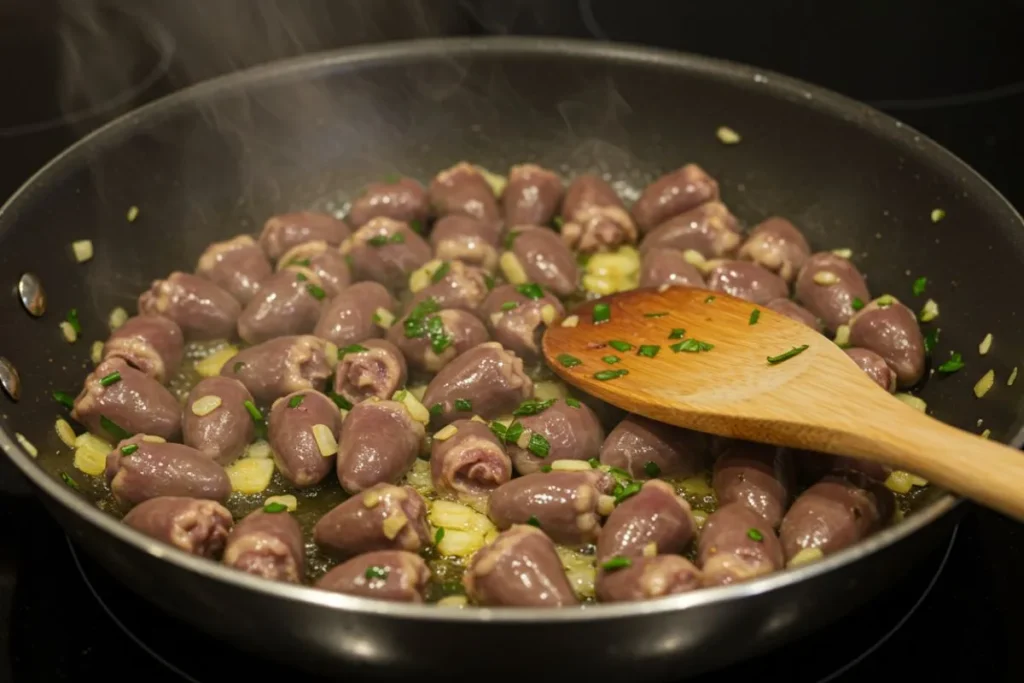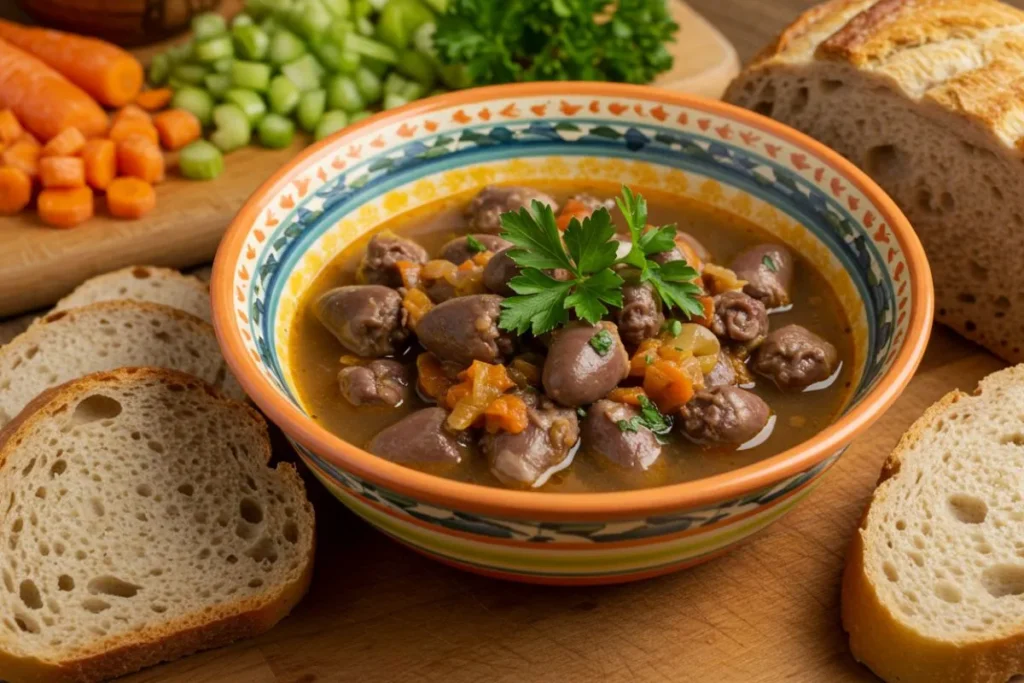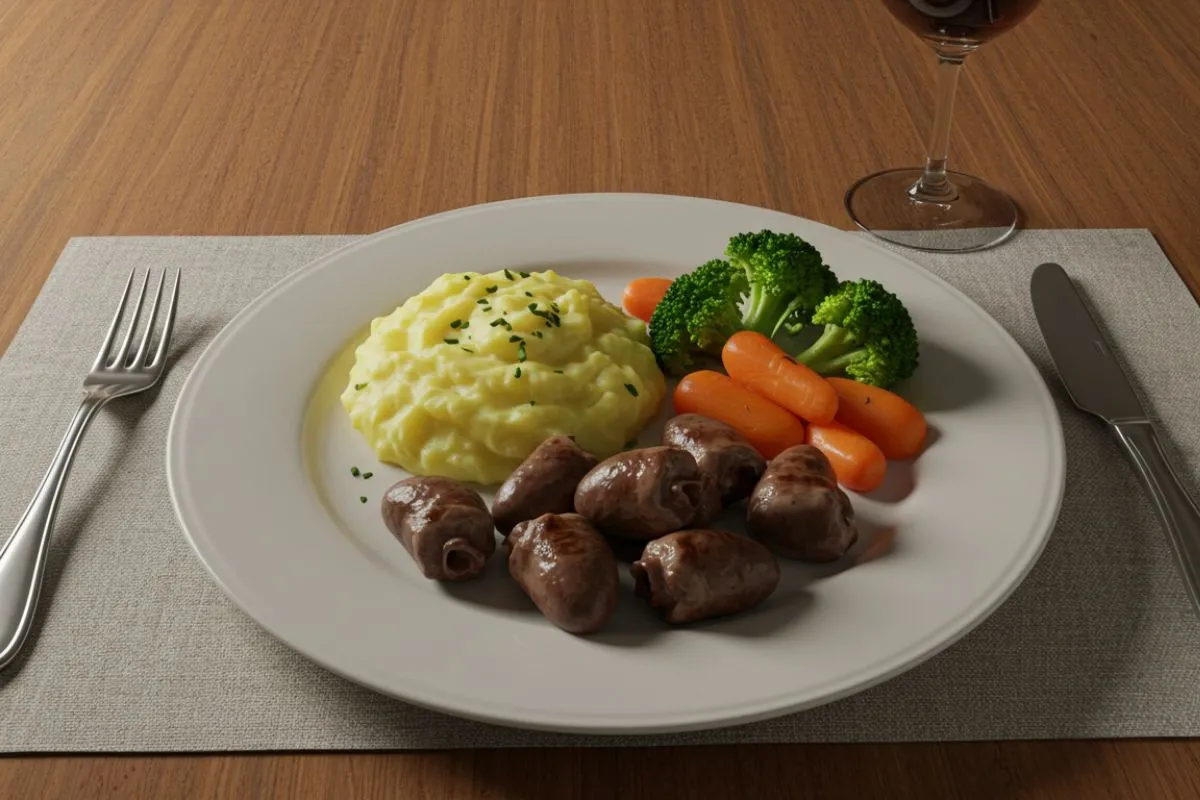Chicken hearts may not be the first thing that comes to mind when thinking about dinner, but these tiny treasures are packed with flavor, nutrition, and culinary versatility. Popular in many global cuisines, they have long been valued for their rich taste and numerous health benefits. From grilled skewers to hearty stews, this ingredient can be a standout addition to your meals.
In this article, we’ll explore everything there is to know about chicken hearts—from their origins and nutritional profile to cooking tips and mouthwatering recipes. Whether you’re new to cooking with organ meats or looking to spice up your dinner repertoire, this guide has you covered.
Introduction to Chicken Hearts
What Are Chicken Hearts?
Chicken hearts are exactly what they sound like—the hearts of chickens. Though small in size, they pack a punch in terms of flavor and texture. With a rich, slightly gamey taste, they are often compared to dark meat chicken but with a firmer, more tender bite.
A staple in many traditional dishes worldwide, chicken hearts are celebrated for their ability to absorb flavors while retaining their unique profile. In Brazilian cuisine, they’re a common sight at barbecue joints, grilled to perfection on skewers. Meanwhile, in Asian dishes, they’re often stir-fried or simmered in savory sauces.
Popularity of Chicken Hearts in Global Cuisines
Chicken hearts have a prominent place in cuisines that emphasize nose-to-tail cooking. In addition to Brazil and Asia, countries like Russia, Poland, and South Africa also incorporate them into their culinary traditions. These cultures appreciate the sustainability and nutritional value that organ meats bring to the table.
Whether grilled, sautéed, or stewed, chicken hearts adapt beautifully to various cooking styles. Their versatility and affordability make them an excellent option for adventurous cooks and home chefs alike.
Nutritional Profile and Health Benefits of Chicken Hearts
Rich in Essential Nutrients
Chicken hearts are a powerhouse of nutrients, making them a valuable addition to any diet. These small organs are loaded with high-quality protein, essential for muscle repair and growth. A single serving of these organ meats provides a significant amount of iron, which helps prevent anemia by supporting red blood cell production. According to Cleveland Clinic, including iron-rich foods like chicken hearts in your diet can support overall health and vitality.
Additionally, chicken hearts are an excellent source of B vitamins, particularly B12, which is crucial for nerve function and energy production. They also contain selenium, a mineral that plays a role in immune health and thyroid function.
Low in Calories, High in Flavor
For those watching their calorie intake, chicken hearts are a great option. Despite being rich in flavor, they are relatively low in calories compared to other protein sources. This makes them an excellent choice for maintaining a balanced diet while still enjoying a satisfying meal.
Moreover, chicken hearts are a natural source of Coenzyme Q10 (CoQ10), a compound known for its antioxidant properties. CoQ10 is thought to support heart health and cellular energy production, adding to the list of benefits these little morsels bring to the table.
How to Prepare Chicken Hearts for Cooking
Cleaning and Prepping
Proper preparation is key to enjoying the best flavor and texture from chicken hearts. Start by rinsing the hearts thoroughly under cold water to remove any blood or residue. Some chicken hearts may come with attached fat or arteries, which can be trimmed away for a cleaner presentation.
For larger meals, marinating the hearts can add depth of flavor. A simple marinade of olive oil, garlic, lemon juice, and your favorite herbs can work wonders. Allow the hearts to soak for at least 30 minutes before cooking to enhance their taste and tenderness.

Cooking Techniques for Chicken Hearts
Chicken hearts can be cooked in a variety of ways, each bringing out their unique qualities. Some popular methods include:
- Grilling: Thread the hearts onto skewers and grill over medium heat. The smoky flavor pairs perfectly with their rich, meaty taste.
- Sautéing: A quick sauté with onions, garlic, and butter creates a simple yet delicious dish.
- Stewing: Simmer in a flavorful broth with vegetables for a hearty, comforting meal.
For a modern twist, consider air frying chicken hearts for a crispy, low-oil option that retains all their natural goodness. Pair them with roasted vegetables or a fresh salad for a complete dinner.
Popular Recipes Using Chicken Hearts
Grilled Chicken Hearts Skewers
Grilled chicken heart skewers are a flavorful and easy way to enjoy this nutrient-packed ingredient. Start by marinating the hearts in a mix of olive oil, garlic, paprika, and soy sauce for about an hour. Then, thread them onto skewers and grill over medium heat until slightly charred and cooked through.
These skewers are perfect for outdoor gatherings or weeknight dinners, pairing beautifully with roasted vegetables or a fresh green salad. Their smoky flavor and tender texture make them a crowd-pleaser.
Chicken Hearts Stew
For a comforting, hearty meal, try a savory stew featuring these flavorful organ meats. Begin by sautéing onions, carrots, and celery in a pot. Add the cleaned pieces and season with bay leaves, thyme, and paprika. Pour in chicken broth, diced tomatoes, and a splash of red wine, then let it simmer until everything is tender and infused with rich flavors.
Serve this stew with crusty bread or over rice for a wholesome, satisfying dinner. The slow cooking method enhances the hearts’ natural flavor while creating a rich, savory broth.

For more delicious and easy-to-make dinner recipes, explore our Garlic Parmesan Chicken Pasta, a perfect addition to your weeknight menu.
The Cultural Significance
A Global Culinary Treasure
These small yet flavorful morsels are more than just an ingredient—they’re a culinary treasure celebrated across continents. In Brazil, churrasco-style grilling highlights the country’s love for meat, with corações de frango often taking center stage. Skewered and simply seasoned with salt and garlic, they’re grilled to smoky, tender perfection. These skewers are a popular appetizer at barbecue gatherings, embodying Brazil’s vibrant, communal dining traditions.
In Japan, chefs consider chicken hearts, or hatsu, a cornerstone of yakitori cuisine. They grill these skewered hearts over hot charcoal, basting them with tare—a savory-sweet soy glaze—or lightly seasoning them with salt to enhance their natural flavor. Paired with sake or beer, they’ve become a favorite for after-work dining and street-side food stalls.
In Southeast Asia, chicken hearts enhance hearty stir-fries, aromatic soups, and rich curries. For example, cooks in the Philippines often prepare them in adobo—a savory dish with vinegar, soy sauce, and garlic—that highlights their natural richness. Similarly, Thai and Indonesian dishes feature chicken hearts in spicy stir-fries, combining them with lemongrass, chilies, and tamarind to deliver vibrant flavors.
Beyond the Table: Cultural and Historical Context
The cultural significance of these small organs extends beyond their flavor. Many traditions embrace organ meats as a way to honor the entire animal. Indigenous communities in South America and Asia have long valued their rich nutrients, incorporating them into celebratory meals and rituals. This practice demonstrates a deep connection to food and sustainability by utilizing all parts of the animal.
Sustainability and Nose-to-Tail Eating
Chicken hearts are emblematic of the growing nose-to-tail movement, a culinary philosophy advocating for the use of every part of an animal to minimize waste. In recent years, chefs and home cooks alike have embraced this approach, not just for its environmental benefits but also for the unique culinary opportunities it presents.
Cooking with these nutrient-rich organs offers a way to reduce food waste while introducing bold, exciting flavors to your meals. For example, incorporating them into a stew or stir-fry creates a dish that is both cost-effective and deeply satisfying. National Geographic highlights the importance of using every part of the animal, showcasing the value of organ meats in promoting sustainability. This ethos of mindful cooking aligns with a global push toward sustainable eating habits, making these ingredients a star in eco-conscious kitchens.
By celebrating such versatile options, we can connect with rich culinary histories while making choices that are better for the planet. Whether as part of a traditional recipe or a modern creation, these small yet mighty morsels continue to play a significant role in kitchens around the world.
Nutritional Value and Health Benefits of Chicken Hearts
Packed with Essential Nutrients
Small in size but packed with nutrients, these organ meats are a powerhouse of health benefits. They’re an excellent source of high-quality protein, vital for muscle growth and repair. Additionally, they boast a rich supply of B vitamins, especially B12, which supports nerve function and red blood cell production.
Iron, a key component found in these nutrient-dense morsels, helps prevent anemia and boosts energy levels. Selenium, another essential mineral, aids thyroid health and protects cells from damage.
For anyone seeking a compact yet nutritious addition to their diet, these flavorful gems deliver remarkable benefits.
Low in Fat, High in Flavor
Chicken hearts deliver rich taste while remaining relatively low in fat when prepared with minimal oil. They provide a healthy alternative to commonly consumed cuts like thighs or wings. Their unique flavor, blending the mildness of liver with the richness of dark meat chicken, makes them a versatile ingredient for pairing with various dishes.
With their combination of nutrients and low-calorie count, chicken hearts are ideal for individuals following high-protein or nutrient-dense diets.
Frequently Asked Questions (FAQs)
Is Eating Chicken Hearts Good for You?
Yes! They are an excellent source of protein, iron, and essential vitamins, making them a nutritious addition to your diet. They are particularly beneficial for those looking to boost their intake of B vitamins and selenium.
What Do Chicken Hearts Taste Like?
Chicken hearts have a rich, meaty flavor that’s similar to dark chicken meat with a hint of liver. When cooked properly, they are tender and juicy, making them a flavorful addition to various dishes.
Do Chicken Hearts Need to Be Cleaned?
Yes, They should be cleaned before cooking. This process involves trimming any fat or connective tissue and rinsing them under cold water. Proper cleaning ensures that your dish has the best texture and taste.
Are Chicken Hearts Healthier Than Breasts?
Both chicken hearts and breasts offer distinct nutritional benefits. Breasts provide lean protein with less fat, whereas hearts deliver essential nutrients like iron and vitamin B12. Your choice depends on whether you prioritize lean protein or a nutrient-rich option.
What’s the Best Way to Tenderize Chicken Hearts?
Chicken hearts may have a slightly firm texture if not cooked properly, but tenderizing can make all the difference. Marinating is one of the most effective ways to achieve a softer, more enjoyable bite. Incorporate an acidic ingredient like vinegar, lemon juice, or yogurt in your marinade to help break down the muscle fibers. Pair these with spices and herbs to boost the flavor profile and take your dish to the next level.
Alternatively, slow cooking is an excellent option for achieving a melt-in-your-mouth texture. Braising them in a flavorful broth or sauce for an hour or more tenderizes them naturally while infusing them with rich flavors.
If grilling or frying, lightly pounding the hearts with a meat mallet before cooking can help ensure even tenderness. Pair this technique with quick, high-heat cooking methods to lock in moisture and prevent overcooking.
Cooking Techniques and Recipe Ideas for Chicken Hearts
How to Prepare Chicken Hearts for Cooking
Proper preparation is key to enjoying chicken hearts at their best. To begin with, trim off any visible fat or connective tissue. Next, a quick rinse under cold water ensures they’re clean and ready for cooking. Afterward, dry them thoroughly with a paper towel, as this step helps achieve a perfect sear if you’re frying them.
To tenderize chicken hearts, marinate them in a mixture of your favorite spices, herbs, and an acid like vinegar or lemon juice. This not only adds flavor but also softens their texture, making them even more enjoyable.
Popular Cooking Methods
You can cook them in various ways to suit your taste and preferences.
- Grilling: Skewered chicken hearts brushed with olive oil and herbs make a fantastic appetizer.
- Stir-Frying: Toss them with garlic, soy sauce, and vegetables for a quick, savory meal.
- Slow Cooking: Simmer them in a flavorful broth with onions and carrots for a tender, rich dish.
- Frying: Pan-fried, seasoned with salt, pepper, and paprika, are crispy on the outside and juicy inside.
Recipe Ideas
- Garlic Butter Chicken Hearts: Sauté them in butter and garlic until golden, then finish with fresh parsley for a simple, delicious dish.
- Spicy Grilled Skewers: Marinate chicken hearts in chili powder, olive oil, and lime juice before grilling to perfection.
- Hearty Stew: Combine chicken hearts, potatoes, and root vegetables in a slow cooker with a tomato-based sauce for a warming meal.
Final Thoughts on Chicken Hearts
These nutrient-packed morsels offer a delightful blend of flavor and health benefits. Their rich, savory taste and tender texture make them a standout in both classic and contemporary dishes. Whether you’re new to cooking with them or exploring innovative recipes, they’re a versatile choice that can transform any meal into something special.
From their role in global cuisines to their undeniable health benefits and impressive kitchen adaptability, these small yet flavorful morsels undoubtedly deserve a spot on your dinner table. Moreover, experimenting with various cooking methods and creative flavor combinations can clearly reveal how this often-overlooked ingredient easily transforms into a family favorite.
For instance, try starting with simple grilled skewers or venture into a hearty, warming stew. Their mild flavor provides the perfect base for bold spices, zesty marinades, or rich, comforting sauces.
Why not explore the possibilities? You might discover a new favorite, savoring their unique taste and the creativity they inspire in your meals. Whether for nutrition, flavor, or culinary curiosity, these versatile bites offer endless potential.

